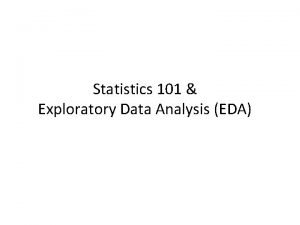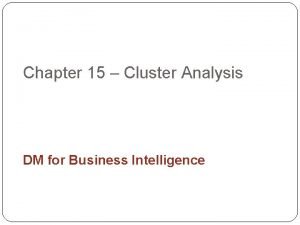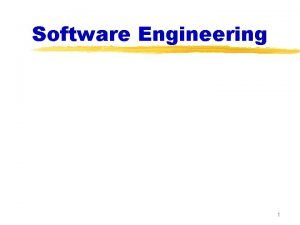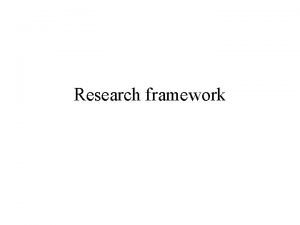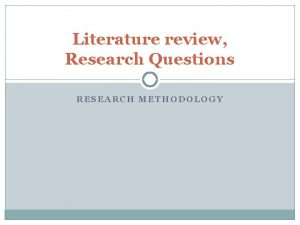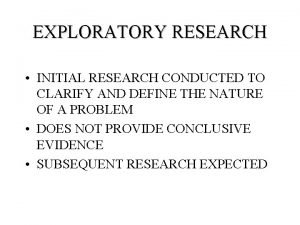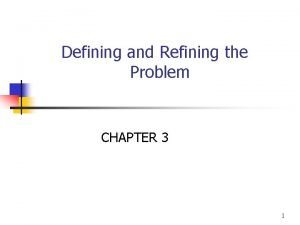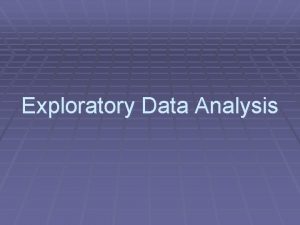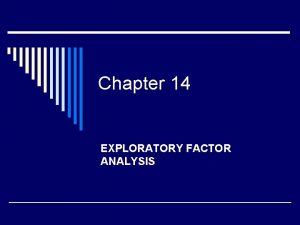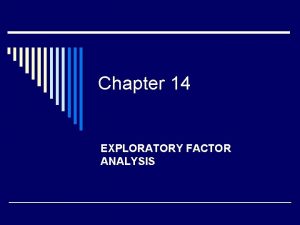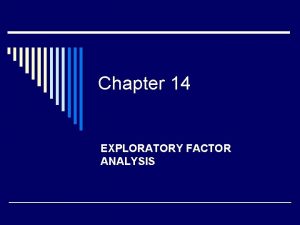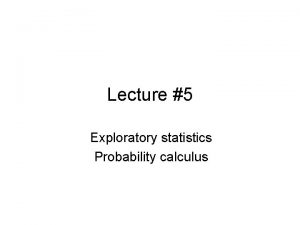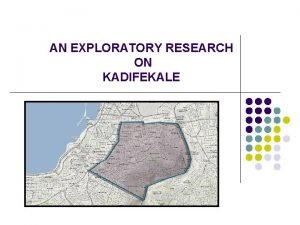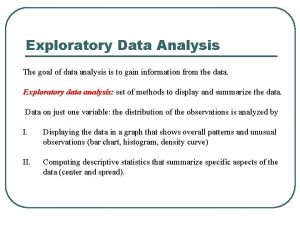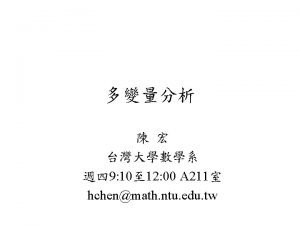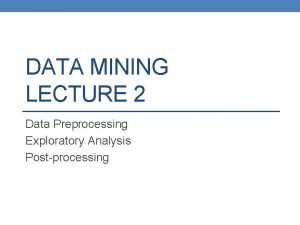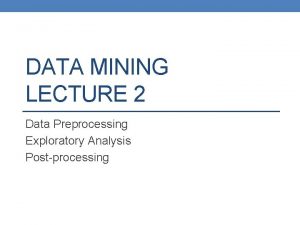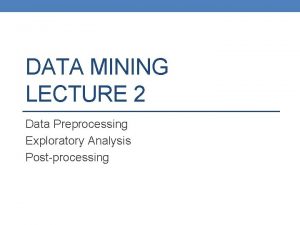WHY WE USE EXPLORATORY DATA ANALYSIS DATA ARE





















- Slides: 21

WHY WE USE EXPLORATORY DATA ANALYSIS DATA ARE SAMPLE DATA FROM „NORMAL“ POPULATION? YES ESTIMATES BASED ON NORMAL DISTRIB. NO WHY ? OUTLIERS EXTREMS KURTOSIS, SKEWNESS QUANTILE (ROBUST) ESTIMATES 1 CAN WE REMOVED THEM ? YES NO TRANSFORMATIONS QUANTILE (ROBUST) ESTIMATES TRANSFORMATIONS

METHODS OF EDA Graphical: dot plot box plot notched box plot QQ plot histogram density plots 2 Tests: tests of normality minimal sample size

DOT PLOT 3

BOX PLOT outer fence inner outer inner median číselná osa lower quartil 4 upper kvartil interquartile range (H)

NOTCHED BOX PLOT RF confidence interval of median 5

Q-Q PLOT measured values Y: sample quantiles (ordered values) 6 ideal match between sample values and theoretical distribution Line a=0, b = 1 X: theoretical quantiles (ordered values)of analysed distribution

Q-Q GRAF 7

Q-Q GRAF 8

Q-Q plot left-leaning – skewed to right-leaning – skewed to left platycurtic („flat, broad“) 9 leptocurtic(„steep, slender“)

10

11

HISTOGRAM 12

HISTOGRAM correct width of interval: 13

HISTOGRAM – kernel density function 14

TRANSFORMATION Aim of transformation: reduction of variance better level of symmetry(normality) of data Transformation function: non-linear function monotonic function 15

TRANSFORMATION – basic concept 0. 8 transformed mean and its projection to original data set Transformed data 0. 6 0. 4 0. 2 mean of original data 0 -0. 2 -0. 4 16 0 0. 5 1 1. 5 2 2. 5 Original data (tree-rings widths in mm) 3 3. 5

TRANSFORMATION – logaritmic transformation 17

TRANSFORMATION – power transformation 18

TRANSFORMATION – Box-Cox 19

TRANSFORMATION – Box-Cox 20

TRANSFORMATION– estimate of optimal = 1 is not included in interval estimate of . It means that interval estimate of parameter transformation will be probably successful logarithm of likelihood function for various values of max. LF – 0, 5*quantile 2 optimal 1. 00 21
 Mikael ferm
Mikael ferm Why why why why
Why why why why Exploratory data analysis lecture notes
Exploratory data analysis lecture notes Eda.a.
Eda.a. Exploratory factor analysis
Exploratory factor analysis Clustering in business intelligence
Clustering in business intelligence Criteria of evaluating secondary data
Criteria of evaluating secondary data Exploratory research secondary data
Exploratory research secondary data Dont ask why why why
Dont ask why why why Why-why analysis
Why-why analysis Contoh laporan root cause analysis
Contoh laporan root cause analysis Types of sae
Types of sae Exploratory research design meaning
Exploratory research design meaning Exploratory style vs modern software development
Exploratory style vs modern software development Exploratory research example
Exploratory research example Examples of conclusive research
Examples of conclusive research Objectives of literature review
Objectives of literature review Where are exploratory robots used
Where are exploratory robots used Exploratory and non directional verb
Exploratory and non directional verb Exploratory essay conclusion
Exploratory essay conclusion Exploratory vs descriptive vs causal research
Exploratory vs descriptive vs causal research Broad problem area example
Broad problem area example



